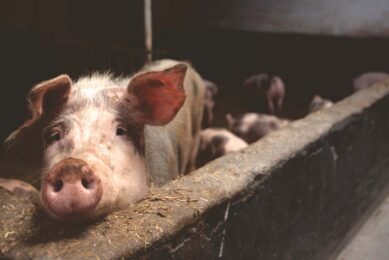US to dominate global pork market next decade
The United States is the world’s largest pork exporter, and is expected to dominate the global pork market over the next 10 years. This promising outlook comes as no surprise to the US Meat Export Federation (USMEF), which works in international markets to increase demand for US pork.
“Pork is the most widely consumed protein in the world, and US pork has quality advantages that set it apart from the competition,” USMEF President and CEO Phil Seng said.
“We communicate the US pork story every day to importers, meat buyers and consumers, increasing awareness of US pork’s safety, superior quality and nutritional value.”
30% export
The latest Agricultural Outlook, produced each July by the FAO and OECD reports that the US share of global pork exports will approach 30% by 2016, and one in every 7.5 kg of pork traded in the world will originate from the United States.
The past 15 years of record-breaking US pork exports have supported growth in the industry, and this trend is expected to continue through the next decade.
“Along with the US pork industry, we realize this past success is not a time to rest on our laurels,” said Seng. “We must use the superior qualities of US pork to our advantage to position it above the competition to continue export growth.”
Exports have grown from just 7% of production in 2000 to more than 15% today, and an anticipated 20% of production in 2016.
Dollar driven export
“Consumers in South Korea, for example, can purchase US pork at a lower cost than domestic product, but are not sacrificing product quality,” Seng said. “Export markets provide a higher return to US pork producers on selected products than if those products were sold domestically.”
The relatively weak US dollar, especially compared to other major pork producing regions, has stimulated demand for US pork.
The euro has been trading at record highs against the US dollar, and similar situations exist with the Canadian dollar, Brazilian real and Chilean peso. US currency depreciation is expected to continue in the near term.
Brazil is steaming up
The EU-27 is expected to be the second largest pork exporter, but Brazil’s exports are anticipated to have the fastest growth rate and surpass the EU-27 by 2016.
Disease status will be the largest variable in Brazil’s actual export growth. Brazil still faces foot-and-mouth disease (FMD) restrictions in Russia, its largest pork export market.
However, Brazil is expected to export more than 26% of its production and have 18% of global pork export market share by 2016.
EU slows down
EU-27 exports are expected to slow due to a number of factors affecting the community, including growth in domestic demand, rising feed and other input costs, costly environmental and animal welfare regulations and the relatively strong euro.
EU-27 exports as a percent of production are expected to decline to 5% over the outlook period, while market share is expected to fall from 26% to 18%.
The outlook projects EU-27 production and consumption remaining relatively stable, while the European Commission’s (EC) own estimates show production increasing just 3.2% from 2006 to 2014.
The EC also expects per capita consumption to increase by just over 3% over the same time period.
Lower export for Canada
Canadian exports in 2016 are expected to be 2% lower than its 2006 export volume, with exports falling from 46% of production to 38% over the next 10 years.
Canada’s share of global exports is expected to fall from 20% in 2006 to 15.6% in 2016 as the industry is not expected to recover from recent losses due to the strong Canadian dollar and high labour and feed costs.
Japan #1 importer
Looking at imports, Japan is expected to remain the No. 1 pork-importing country, accounting for one-quarter of global pork imports.
Other major pork importing countries are Russia at 11%, Mexico at 8% and South Korea at 5% of global pork exports.
Join 18,000+ subscribers
Subscribe to our newsletter to stay updated about all the need-to-know content in the pigsector, three times a week. Beheer
Beheer










 WP Admin
WP Admin  Bewerk bericht
Bewerk bericht